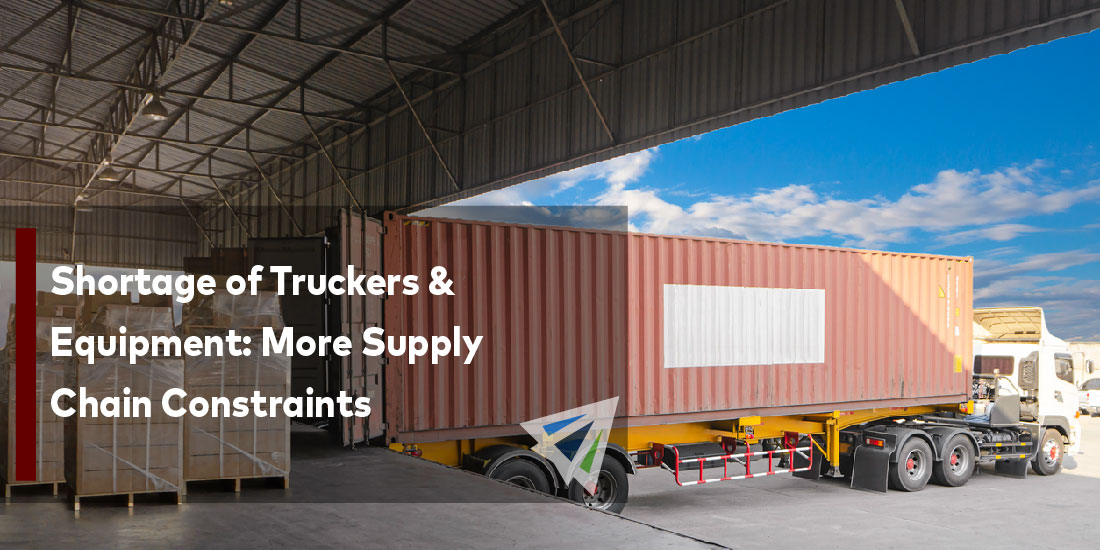Shortage of Truckers & Equipment: More Supply Chain Constraints
Congestion at ports and delays for inbound shipments are at all-time highs. Many shippers have struggled through both 2020 and 2021, especially in stocking up for the December holiday shopping season, as moving cargo inland has become more and more difficult.
While several factors contribute to the delays and congestion, a major problem has been the availability of truckers. As anyone in the shipping industry understands at this point, truckers are few and far between, and the lack of workforce is one of the greatest bottlenecks in clearing ports and getting cargo to its final inland destination. However, it’s not the only one.
Equipment Shortage: Lack of Trailers
OEMs (original equipment manufacturers) are struggling to get trailers produced. Between labor shortages; semiconductor and parts shortages; and COVID-related obstacles, OEMs are far behind on their expected production forecasts. This problem only continues to get worse.
Recent reports show that the current orders for new tractors and trailers are already extending beyond what the OEMs can produce next year. Even if purchases came to a halt, with current orders, there wouldn’t be enough workforce, parts, and time to meet the current demand for new equipment. This comes at bad timing, as it’s being combined with an already dwindling industry fleet of truckers.
Equipment & Truck Repairs
Not only is the lack of new equipment an issue. One of the greatest threats to an already struggling trucking industry is the need to repair equipment and trucks. Due to part shortages and high shipping demands, truckers are being forced to push equipment to its limit without having healthy intervals of regular scheduled maintenance.
Carriers would love to replenish their equipment supply and get the necessary maintenance work done on their fleet of trucks and trailers, but the chances of that happening in 2022 are looking astronomically small.
What Does This Mean for Capacity?
Demand continues to rise, and we would all love to see capacity follow that trend. However, the insights gleaned from OEMs and carriers suggest that most likely will not happen – at least not anytime soon.
If any improvements come, there’s a slim chance they might happen by the third quarter of 2022, at which point it would be too late anyways to make a noticeable difference in capacity before the end of the year.
Where to Go from Here
Essentially, at this point, it’s a waiting game. There’s not a lot that anyone can do to speed up the process, but the hope is that OEMs and carriers are able to be more resourceful with what’s available as it comes in. But at the end of the day, the market conditions of the last couple years combined with the increase in demand and decrease in equipment are having major implications on the shipping industry.
Please reach to our team at InterlogUSA for more information or questions you have regarding your shipping situation.
